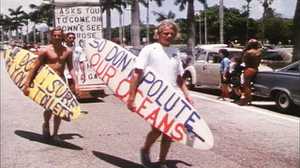June 30, 1948: The Postwar Period
The first piece of legislation to lay down federal regulation of water quality, the Federal Water Pollution Control Act, is passed by Congress. This act, known as the FWPCA , will go through amendments in 1956, 1965, and 1972 to broaden the government’s authority in water pollution control.
October 30-31, 1948
In Donora, PA, 20 people die and over 600 go to the hospital after sulfur dioxide emissions from a nearby steel and wire plant descend in the form of smog, made worse by a temperature inversion that trapped the sulfuric poison in the valley of the town. The incident will lead to the first U.S. conference on air pollution in 1950, sponsored by the Public Health Service.
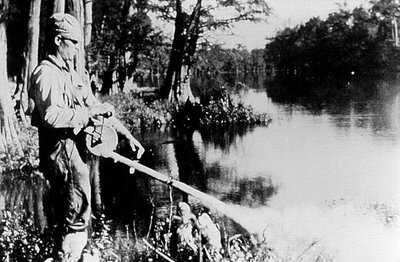
September 1949
Paul Ehrlich (future author of The Population Bomb) enters the University of Pennsylvania and studies zoology. He notes the disappearance of butterflies in New Jersey, which he attributes to the spraying of dichlorodiphenyltrichloroethane (DDT) during the building of subdivisions. The shrinking population of butterflies leads Ehrlich to think about potential similar repercussions in the human population.
October 22, 1951
The Nature Conservancy is established in Washington, D.C. as a nonprofit organization with the mission to protect ecologically important lands and waters around the world. Over the next several decades, the Nature Conservancy will protect more than 119 million acres of land and 5,000 miles of rivers worldwide. It will grow to more than 1 million members, and operate more than 100 marine conservation projects.
November 1953
Heavy smog in New York City exacerbates asthma and other lung conditions, killing 170-260 people. More New Yorkers will die again in 1962 and 1966 with more “smog episodes.”
November 20, 1952
The Paley Commission releases Resources for Freedom which details the United States’ increasing dependence on foreign sources of natural resources and argues for the necessity to transition to renewable energy. This document was one of the first to argue both for the dire need for Americans to stop their reliance on oil and for the potential of solar energy to fulfill that chasm. William Paley, chair of the presidential commission, establishes Resources for the Future later in 1952, an organization dedicated to independent environmental research.
February 1953: A Growing Public Awareness
The Silent World by Jacques Cousteau introduces the world to underwater adventure, and ushers in a new global interest in oceanic life. In 1956, Cousteau’s documentary film of the same title will win the Academy Award for Best Documentary Feature.
January 1955
President Eisenhower speaks on the problem of air pollution in his State of the Union address, and in a Special Message to Congress he calls on the Public Health Service to study “effective methods of control.”
July 14, 1955
The Air Pollution Control Act passes Congress, becoming the first piece of legislation to address air pollution. Despite its declaration to combat air contamination, the act puts regulation largely in the hands of individual states and gives no means of enforcement to the federal government.

April 1956
The Sierra Club gains national recognition for protesting construction of the Echo Park Dam in Dinosaur National Monument in Utah. After effective lobbying, Congress removed the Echo Park Dam from the Colorado River project.
July 9, 1956
An amendment to the Federal Water Pollution Control Act of 1948 strengthens the government’s ability to enforce regulations and gives the Federal government control over individual states’ consent where health is endangered.
1960
Worldwide levels of carbon dioxide will climb above 300 parts per million.
1962
Congress amends the Air Pollution Control Act of 1955 to fund a study conducted by the U.S. Surgeon General to investigate the health effects caused by automobile exhaust. In the United States alone, there are 74 million cars on the road.
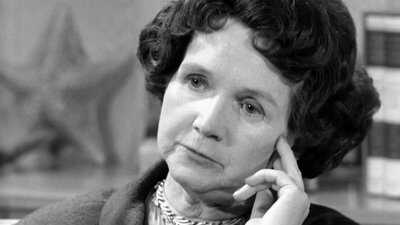
June 1962: "Silent Spring" Rachel Carson’s Silent Spring is published. Acclaimed as the catalyst of the modern environmental movement, Silent Spring condemns the overuse of pesticides. Between 1950-1962 the amount of DDT found in human tissue had tripled.
After the chemical industry denounces Carson’s book as a “gross distortion of actual facts,” President John F. Kennedy charges his Science Advisory Committee to review the book’s claims. The Committee reports that the conclusions in Silent Spring are generally correct, and by 1972 DDT will be banned in the U.S.
1963
83 million Americans own personal automobiles. In response to increased evidence of a link between smog and car emissions, California mandated crankcase blowby devices that return unburned gases to the combustion chambers in all cars in 1961. California has begun its reign as a leader in emissions standards, as this requirement was the first such imperative in the country.
November 1963
Secretary of the Interior Stewart Udall publishes The Quiet Crisis, an early call to arms on environmental pollution with an introduction by President Kennedy. Udall will go on to become a pioneer for environmental legislation.
December 1963
The Clear Air Act passes, allocating $95 million for the study and cleanup of air and water pollution. The act gives the federal government authority to reduce interstate air pollution, regulate emission standards for stationary pollution sources, and invest in technologies that will remove sulfur from coal and oil.
October 2, 1965
The Water Quality Act passes, enhancing Federal control over water quality initially set by the Federal Water Pollution Control Act of 1948. These federal standards will become the baseline for statewide water quality levels.
October 20, 1965
The Motor Vehicle Air Pollution Control Act sets the first federal automobile emission standards.

October 15 1966
The first legislation regarding Endangered Species passes, authorizing the Secretary of the Interior to list endangered domestic fish and wildlife and allotting $15 million a year in the protection of such species.
The first list of Endangered Species – released in 1967 – will include the United States’ national symbol, the American Bald Eagle.
August 1968: Changing Perspectives
In The Population Bomb, Paul Ehrlich argues that the world’s environmental problems are caused by overpopulation. At 3.5 billion people, the population of the world had more than doubled in the past half century. Despite the fact that his dire predictions of catastrophe will never come to pass, Ehrlich’s apocalyptic warnings play a pivotal role in bringing the issues of family planning, contraception and legalized abortion to the forefront of domestic and international politics.
Fall 1968
Stewart Brand publishes The Whole Earth Catalog , which lists a variety of products helpful for self-sustainable living.
Stewart Brand will help lead a “back-to-the-land” movement that encourages people to return to organic living. “Rural communes” spring up, consisting largely of liberal, educated college students who try to live independently off the land. While the communes ultimately will not last, the experiment reflects an emerging recognition of environmental issues in the popular culture.
October 2, 1968
The Wild and Scenic Rivers Act provides a system that identifies and adds rivers across the United States to a protected list. By 1989, over 1,385 miles of rivers will be protected in Alaska alone.
On this same day, Congress passes the National Trails System Act, authorizing a similar set of proceedings to protect U.S. trails.
December 24, 1968
The crew of Apollo 8 takes the first photograph of the Earth from space. The photograph, named “Earthrise,” will become the iconic image of the environmental movement.
January 28, 1969
The Santa Barbara oil well blowout spills over 200,000 gallons of oil into the ocean for 11 days straight. Due to the destruction and extreme pollution of the California coastline, the spill leads directly to reforms in the energy industry.
June 22, 1969
Ohio’s Cuyahoga River appears to burst into flames when oil and chemicals floating on the surface alight and cause flames over five stories high.
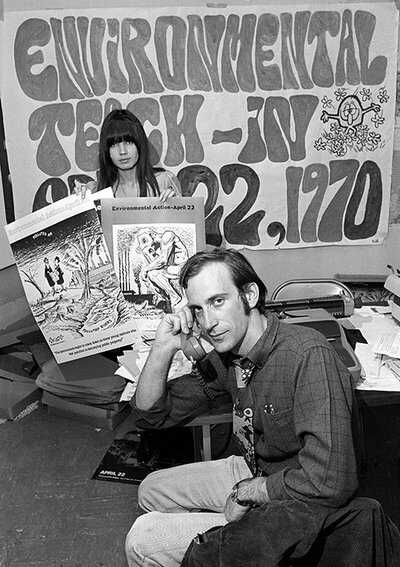
December 1969
Gaylord Nelson, a U.S. Senator from Wisconsin, hires 25-year-old Denis Hayes to direct a national “teach-in” about environmental issues. Hayes recruits a handful of young college graduates to come to Washington, D.C. and begins planning what will become the first Earth Day.
January 1, 1970
Congress passes the National Environmental Policy Act (NEPA), requiring every federal agency to prepare an Environmental Impact Statement (EIS) for any legislation.
The Act’s passage is due in large part to the public outcry that resulted from the Santa Barbara oil spill the year before.
January 14, 1970
General Motors' president Edward Cole promises “pollution free” cars by 1980, citing the removal of lead from gasoline and the addition of catalytic converters as means to stop deadly emissions.
January 22, 1970
In recognition of the growing media attention given to the approaching Earth Day, President Richard Nixon stresses the importance of environmental issues in his State of the Union Address.
January - March 1970
In the months leading up to Earth Day, advertisements amplify the direness of the environmental problems facing the world, reading: “It can be the beginning of the end of pollution. Or the beginning of the end.”
Some opponents condemn the movement to organize a national Earth Day as an unpatriotic deflection from the war in Vietnam. Others point out the fact that April 22, 1970 is the 100th anniversary of the birth of Vladimir Lenin, and warn Americans that Earth Day could be a clever communist plot.
April 22, 1970: Earth Day
The first national Earth Day. Co-chaired by Congressman Pete McCloskey and coordinated by Denis Hayes, the first Earth Day takes the form of a nationwide protest against environmental ignorance. An estimated 20 million people participate across the country, in what will ultimately be the largest demonstration ever in American history.
June 1970
The Natural Resources Defense Council (NRDC) is established to provide citizens with the tools to draft environmental laws and lobby for their passage.
July 9, 1970
President Nixon works with Congress to establish the Environmental Protection Agency (EPA), a new Federal agency primarily responsible for United States environmental policy. In its first year of operation, the agency will employ over 4,000 Americans.
The EPA will be responsible for the passage of environmental legislation, ecological programs, and research.
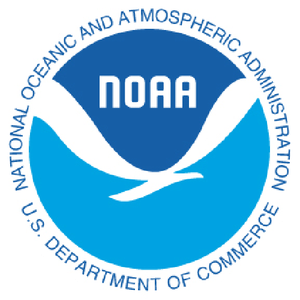
October 2, 1970
The National Oceanographic and Atmospheric Administration (NOAA) is created to monitor and improve the conditions of the oceans. NOAA enforces the sustainable use of resources of coastal and marine ecosystems and supplies environmental information to the public.
November 1970
During the election cycle after Earth Day, Denis Hayes organizes a movement to unseat “The Dirty Dozen” - a list of 12 members of Congress with infamous records on environmental policy. The movement will successfully remove seven of the incumbents, and earn the environmental movement significant political clout in the legislature.
October 18, 1972: A Wave of Legislation
The Clean Water Act (CWA) becomes the primary legislation governing water pollution in the country. The goal of the CWA is to eliminate toxic substances in water and to uphold surface water to a national standard of cleanliness. The act, an amendment to the Federal Water Pollution Control Act of 1948, bestows enforcement authority on the EPA and restructures previous water quality regulations.
October 21, 1972
The Marine Mammal Protection Act (MMPA) protects all marine mammals from importation, exportation, hunting, capture, or any form of harassment, thus encouraging natural resource management in the United States.
Two days later, on October 23, the Marine Mammal Protection Act (MMPA) protects all marine mammals from importation, exportation, hunting, capture, or any form of harassment, thus encouraging natural resource management in the United States.
October 27, 1972
The Coastal Zone Management Act mandates coastal states to develop management plans to offset the negative impact of humans on coastal areas.
October 31, 1972
Dennis Meadows co-authors The Limits to Growth, a study of the interaction between population, industrial growth, food production and ecosystem limits. In the book, Meadows demonstrates with clear diagrams and linear models that Earth’s resources are being steadily used up, and as these resources drop, human population is expanding exponentially. The Limits to Growth predicts that by the middle of the 21st century, Earth’s population will no longer be sustainable and the ecosystem will completely collapse.
December 31, 1972
DDT is banned in the United States, the result of nearly 10 years of legislative battles. Since Rachel Carson’s Silent Spring first brought DDT into the spotlight in 1962, the government formed investigative panels and committees to substantiate the danger of the pesticide. With the ban, the Administrator of the EPA , William D. Ruckelshaus, stated his conviction that “the continued massive use of DDT posed unacceptable risks to the environment and potential harm to human health.”
October 1973 - March 1974
During the Arab Oil Embargo, energy demands exceed supplies in the United States for first time. The fuel shortage results from the suspension of oil shipments to the U.S., with gas prices skyrocketing and the price of a barrel increasing 400% from $3 to $12 a barrel. The energy crisis fuels immediate research into alternative energy and creates a new dialogue about energy security for the United States.
December 28, 1973
Congress passes the Endangered Species Act in order to prevent the extinction of animals in the United States. This act restructured the 1966 legislation regarding endangered species and directed the U.S. Fish and Wildlife Service and the NOAA to carry out its stipulations.
June 26, 1974
President Nixon signs the Energy Supply and Environmental Coordination Act, the first attempt to balance the nation’s energy demands with appropriate environmental regulations.
June 28, 1974
Chemists Frank Sherwood Rowland and Mario Molina claim that Chlorofluorocarbons (CFCs) can destroy ozone molecules and may erode the Earth’s protective ozone layer.
A report released two years later by the U.S. Academy of Sciences will provide further scientific evidence to support the hypothesis of ozone depletion. In 1978 the United States will ban the use of CFCs in aerosol cans, but is not until the early 1990s that CFCs will begin to be phased out of product production.
August 17, 1974
The Forest and Rangeland Renewable Resources Planning Act of 1974 (RPA) is enacted in an effort to monitor forest resources in the United States. The RPA mandates comprehensive assessments in order to supervise forest supply.
December 12, 1974
The EPA is charged with settling and monitoring water quality standards with the Safe Drinking Water Act (SDWA), covering every public water system across the country.
January 3, 1975
The Eastern Wilderness Areas Act protects over 200,000 acres of National Forests. This legislation is the first to protect lands that were once logged or previously inhabited.
October 11, 1976
The Toxic Substances Control Act mandates the EPA to control all new and existing chemical substances being used in the United States. The act controls polychlorinated biphenyl (PCB) and other toxic products, although the management of existing chemicals are grandfathered and untouched by the act.
October 21, 1976
The EPA is given complete control over hazardous waste in the Resource Conservation and Recovery Act, which mandates the agency manage all aspects of toxic waste management.
The following day, National Forest Management Act requires the Secretary of Agriculture to monitor forestlands and to develop a standard to manage each unit of the National Forest System.
1977
Architects of Governor Jerry Brown’s Office of Appropriate Technology design the first energy-conserving, self-ventilating building in Sacramento, the Bateson Building.
April 18, 1977
In a televised speech, President Jimmy Carter announces his energy plan, including goals to lower U.S. energy demand, reduce gasoline consumption, cut the portion of oil imported into the U.S., increase domestic coal production, and increase the use of solar energy. Carter also proclaims his goal of getting 20% of the nation’s energy from renewable energy resources by the year 2000 during his 1979 Solar Message to Congress.
August 4, 1977: Carter's Ambitions
President Carter establishes the Department of Energy (DOE), charged with carrying out a comprehensive national energy plan that reflects the federal legislation. The DOE takes accountability for long-term research and technological development, energy regulation, nuclear weapons, and energy data collection and analysis.
June 15, 1978
The Supreme Court uses the 1973 Endangered Species Act as reason to stop the construction of the Tellico Dam in the Tennessee Valley Authority vs. Hill case. The decision upholds the rights of an endangered species over unrestricted expansion, and reflects growing American opposition to dam construction.
July 1978: Successes and Failures
Reporter Michael H. Brown raises questions that lead to the discovery of long-term dioxin contamination at Love Canal, a neighborhood in Niagara Falls, NY. Up to 21,000 tons of toxic waste had been dumped in the canal by the Hooker Chemical Company from 1942-1952 and caused significant numbers of birth defects, abnormalities in children, and miscarriages.
The national media fallout from the Love Canal disaster leads to the Comprehensive Environmental Response Compensation and Liability Act, more commonly known as the “Superfund” legislation, which mandates clean up of abandoned hazardous waste sites by the parties responsible. Superfund will be signed into law on December 11, 1980.
October 25, 1978
The Nimbus-7 spacecraft is launched as the first satellite with the technology to take comprehensive worldwide measurements of the ozone layer.
November 9, 1978
The Energy Tax Act creates an incentive for ethanol use. This is the first instance of using tax credits to encourage fuel efficiency and renewable energy.
1979
President Carter appoints Earth Days organizer Denis Hayes as head of the Federal Solar Energy Research Institute (SERI) and allocates billions for solar technology research. The SERI is one of the only federal programs dedicated to rethinking our current energy system, but its budget will be cut dramatically in 1981 under the Ronald Reagan administration.
March 28, 1979
The meltdown of the Three Mile Island nuclear power plant in Middletown, PA, causes the evacuation of 140,000 people. It will take more than ten years to clean up fully.
June 20, 1979
Solar heaters are installed on the White House roof in support of Carter’s Federal Solar Research Institute. President Carter heralded the solar panels, arguing that “we must balance our demand for energy with our rapidly shrinking resources.”
In 1980, the price of oil will jump to $30 a barrel.
September 25, 1979
In order for the Tellico Dam to be built, the U.S. Congress exempts the Tellico Dam from the Endangered Species Act, the precedence of which the Supreme Court had argued the year before. The species at risk, a small fish called the snail darter, is relocated to the Hiwassee River. This exception sets a precedent that will allow specific projects to be excluded from the Endangered Species Act.
Early 1980s
The world population hits 4.5 billion, the total economic loss caused by great weather and flood catastrophes increases nearly 55% in the 1980s compared to the previous decade, and the arctic ice cap continues to melt. CO2 concentration hits 335ppm, up from 315ppm in 1960.
Despite the categorical changes in legislation and a new enforcement agency set up in the previous decade, no significant progress can be detected on most environmental fronts.
July 24, 1980
Commissioned by President Carter in 1977, The Global 2000 Report to the President is released by the Council on Environmental Quality and the U.S. Department of State. This study echoes statistics first seen in Limits to Growth that pointed to current trends in the environment and what that will mean in the coming decades.
February 17, 1981: Reagan's initiatives
New President Ronald Reagan issues an Executive Order that gives the Office of Management and Budget (OMB ) the power to regulate environmental proposals before they become public. Reagan also cuts the budget of the Environmental Protection Agency by 12% and staff by 11%. The solar water heating system on the White House roof, installed by President Carter, will be dismantled in Reagan’s second term in August 1986.
September 1981
President Reagan cuts the EPA’s budget to 44% of its 1978 level, and the number of enforcement cases submitted to the EPA during the fiscal year will decline by 56%.
May 1985
Nature magazine publishes an article providing evidence that confirms the ozone hole over the Antarctic. This article creates a new wave of media attention on the now-stalled environmental movement. The ozone is estimated to have been declining at about 4% of the total volume per decade since the 1970s. This study and confirmation by the Nimbus-7 satellite catalyzes a torrent of studies investigating the consequences of ozone depletion.
October 17, 1986
Emergency Planning and Community Right-to-Know Act (EPCRA), a subset of the Superfund Amendments and Reorganization Act (SARA), requires industries to report toxic releases to the general public. The federal law creates the new State Emergency Response Commission (SERC) to enforce these new requirements.
September 16, 1987
The Montreal Protocol is signed by the U.S., Japan, Canada, and 21 other countries, agreeing to phase out ozone-depleting CFCs by the year 2000.
June 23, 1988
NASA scientist James Hansen warns Congress about the consequences of global warming, and argues that the ozone layer is eroding much faster than was predicted.
November 18, 1988
President Reagan signs the Ocean Dumping Ban Act of 1988, a law that prohibits all waste dumping in the ocean starting in 1992.
December 6, 1988
The World Meteorological Organization and the United Nations Environmental Program establish the Intergovernmental Panel on Climate Change (IPCC). The IPCC provides balanced scientific information regarding climate change and will release Assessment Reports in 1990, 1995, 2001, and 2007. The panel will be awarded the Nobel Peace Prize for its last Assessment Report in 2007.
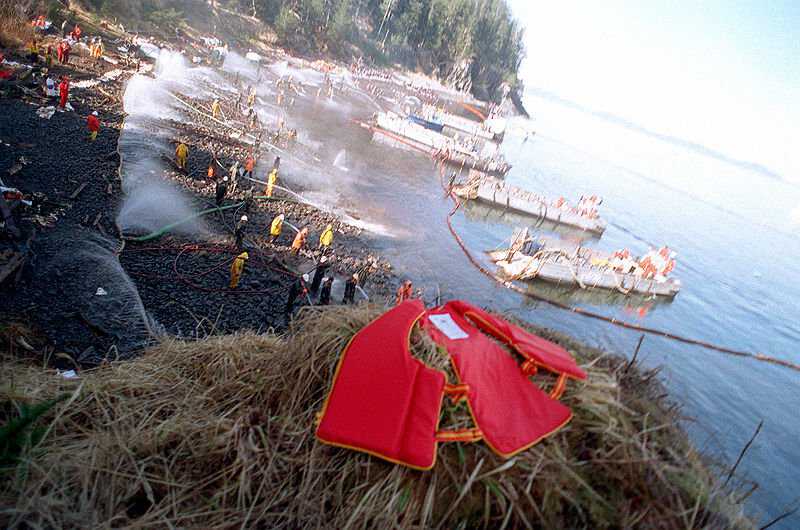
March 24, 1989
The Exxon Valdez tanker spills 11 million gallons of oil, killing more than 250,000 birds and covering over 1,300 square miles of ocean with oil. The accident is the largest oil spill in the history of the U.S.
April 22, 1990: The Anniversary
More than 140 countries celebrate the 20th anniversary of Earth Day, calling attention to environmental issues for the 1992 United Nations Earth Summit in Rio de Janeiro, Brazil.
The Clean Air Act is amended for tighter restrictions on air pollution emissions, and the Pollution Prevention Act provides incentives to corporations to reduce pollutants. In a 1989 Gallup poll, 76% of Americans call themselves “environmentalists."








